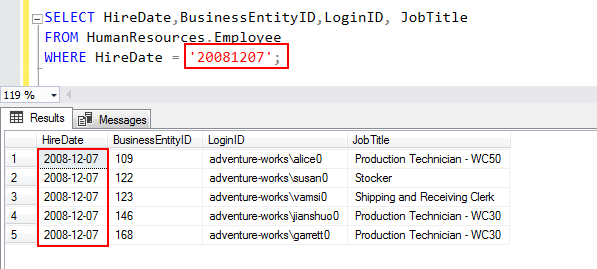If you’re new to SQL and wondering where dates fit in, then you’ve come to the right place! In this article, we’ll explore the basics of working with dates in SQL and how to make the most of this powerful language. You’ll learn how to store, retrieve, and manipulate dates, as well as how to use date functions to get the most out of your data. With these skills, you’ll be able to get the most out of your database and use it to its full potential. So, let’s get started!
Benefits of Using Dates SQL for Data Integrity

Using DateSQL for data integrity is an amazing way to ensure that data is safe and secure. With DateSQL, you can easily keep track of when data is created, updated, and deleted. This allows you to make sure that the data in your system is up-to-date and accurate. Additionally, DateSQL enables you to easily detect any issues with your data so that you can take the necessary steps to rectify them. Furthermore, DateSQL can help you protect your data from unauthorized access, as it can easily be used to set up access restrictions and other security measures. By utilizing DateSQL for your data integrity, you can rest assured that your data is safe and secure.
Tips for Utilizing Dates SQL in Database Management

.If you want to get the most out of your database management, utilizing Dates SQL is a great way to do so. Dates SQL can help you make sure your data is up-to-date and accurate, as well as help you organize and analyze your data in meaningful ways. There are a few key tips to keep in mind when using Dates SQL. First, make sure you know when and how to use the different SQL date functions like DATE, YEAR, MONTH, DAY and TIMESTAMP. You should also be aware of how to use the different comparison operators like “=”, “<>” and “BETWEEN”. Finally, make sure you know how to combine different date functions to get the most out of your query. With these tips in mind, you’ll be able to make the most out of Dates SQL and ensure your database management is running smoothly.
How Dates SQL Enhances Data Organization and Security

Dates SQL is great for organizing and securing data. It helps you keep track of when data was created, modified, or accessed, which is essential for staying organized and safe. Dates SQL also allows you to quickly search for data that was created or modified within a certain timeframe. This can help you quickly find any data that could potentially be compromised or changed without your knowledge. On top of that, it also makes it easy to create backups of your data so you can easily restore to the correct date if something goes wrong. With Dates SQL, you can rest assured that your data is secure and organized.
Strategies for Writing Effective Dates SQL Queries

Writing effective SQL queries for dates can be a daunting task for many, but it doesn’t have to be! With a few simple strategies and a bit of practice, you can easily write effective dates SQL queries that will get the job done. One of the most important strategies is understanding the various date and time functions available in SQL. Knowing how to use these functions properly will make writing SQL queries for dates much easier. Additionally, it’s important to understand the different data types that can be used when working with dates. Knowing the different data types and how they interact with each other will help you create more efficient queries. Finally, it’s important to practice writing SQL queries for dates. By familiarizing yourself with the syntax, you can write more effective queries that will save you time and help you get the results you need. With these strategies, you’ll be able to write effective dates SQL queries with ease!
Keeping Your Dates SQL Data Accurate and Up-to-Date

When working with dates in SQL, accuracy is key! Keeping your data up-to-date is essential to make sure your queries and results are accurate. To make sure your dates stay fresh, use the CURRENT_TIMESTAMP function to add the current date and time to your tables, and then use triggers to keep your data up-to-date. Triggers are a great way to automate your data updates, so you don’t have to worry about manually updating each entry. To make sure your dates are accurate, you can also use the DATE_FORMAT function to format your dates and make sure they are in the right format before you insert them into your tables. Keeping your dates SQL data accurate and up-to-date is important to make sure you are getting the most accurate and current results from your queries.




